by Florian König, mautwelt.de - 24 October 2023
The Czech Republic is a country in Central Europe with excellently preserved castles and chateaux and a long history. In addition, there is a wide selection of local beers for connoisseurs to taste.
In the capital Prague, the impressive 9th century Prague Castle "Hradschin", the well-preserved medieval Old Town and the statue-lined Charles Bridge are definitely worth a visit. Other sights include the Gothic St Vitus Cathedral with its famous stained glass windows and St George's Basilica with its red façade and Romanesque interior architecture. The small, colourful houses along the Golden Lane are home to historical exhibitions and souvenir shops. Wine tastings are offered at the St. Wenceslas Vineyard.
The Czech Republic as a travel destination is easy to reach without any major travel formalities such as a visa. The motorway network is excellent, so you can easily bypass Plzeň, Prague and other large cities if you want to travel further inland to the castles, nature parks or spas described below.
Why is the Czech Republic worth at least one trip?
The Czech Republic may not be on many people's bucket list, especially if you ignore the famous capital city of Prague. Here are 7 travel ideas that will help you get to know the "typical" Czech Republic…
1. The national capital Prague
Over the centuries, Prague has received many different nicknames. For example, it has been called the "Golden City", the "City of a Hundred Spires" and the "Magic City". People are rightly proud of Prague's well-preserved historic centre, which was added to the UNESCO World Heritage List in 1992. The city is characterised by old stone bridges, cobbled streets and lively squares where you can admire Gothic, Romanesque and Baroque buildings.
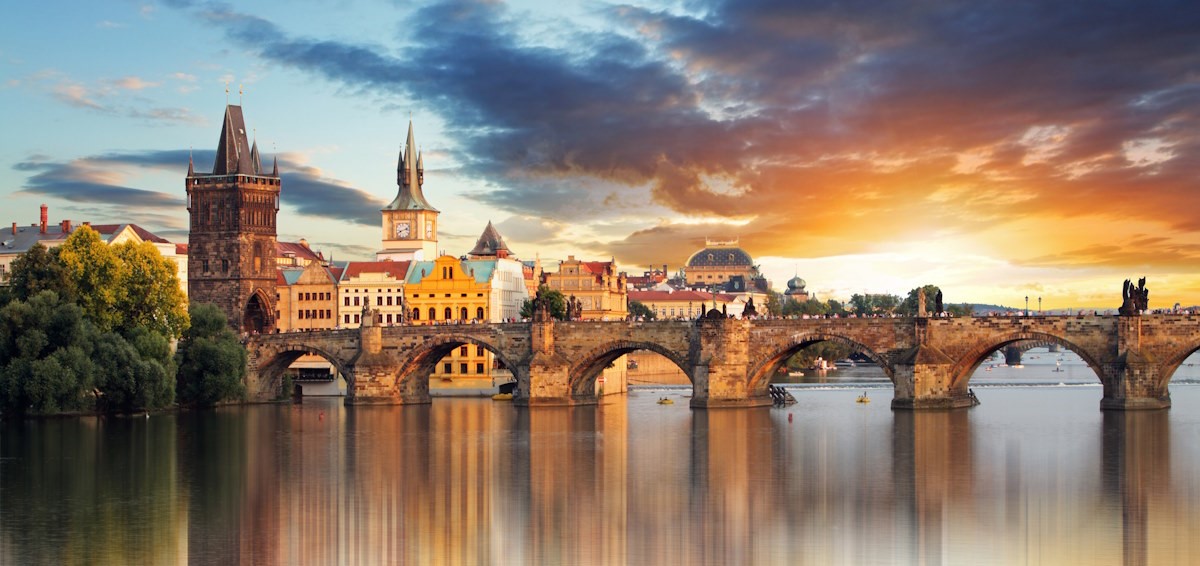
Prague is particularly attractive to visit during the spring to autumn months. During this time, the historical buildings shine in full splendour and the city shows its true magic. When walking around the city, you will find cosy cafés, bars as well as restaurants for a break everywhere and you can also enjoy numerous open-air events. In the winter time, the Christmas stalls invite you to a magical visit. We recommend you get to know the quieter side of Prague in winter, you can enjoy the city much more and have almost no waiting time at the sights.
2. Historically interesting medieval towns
Besides the capital city of Prague (Praha in Czech), the Czech Republic has many other historically interesting cities to offer. Typically, almost all of them have a large castle, a beautiful old town and a city history that goes back to the Middle Ages.
The Vltava River runs through the centre of the South Bohemian town of Krumau(Český Krumlov), and a 13th-century castle rises above the buildings. The chateau building combines Gothic, Renaissance and Baroque features and, in addition to a large park covering 11 hectares, also boasts a Baroque theatre built in the 17th century. From the castle's round bell tower, you can enjoy a breathtaking panorama of the old town and the river.
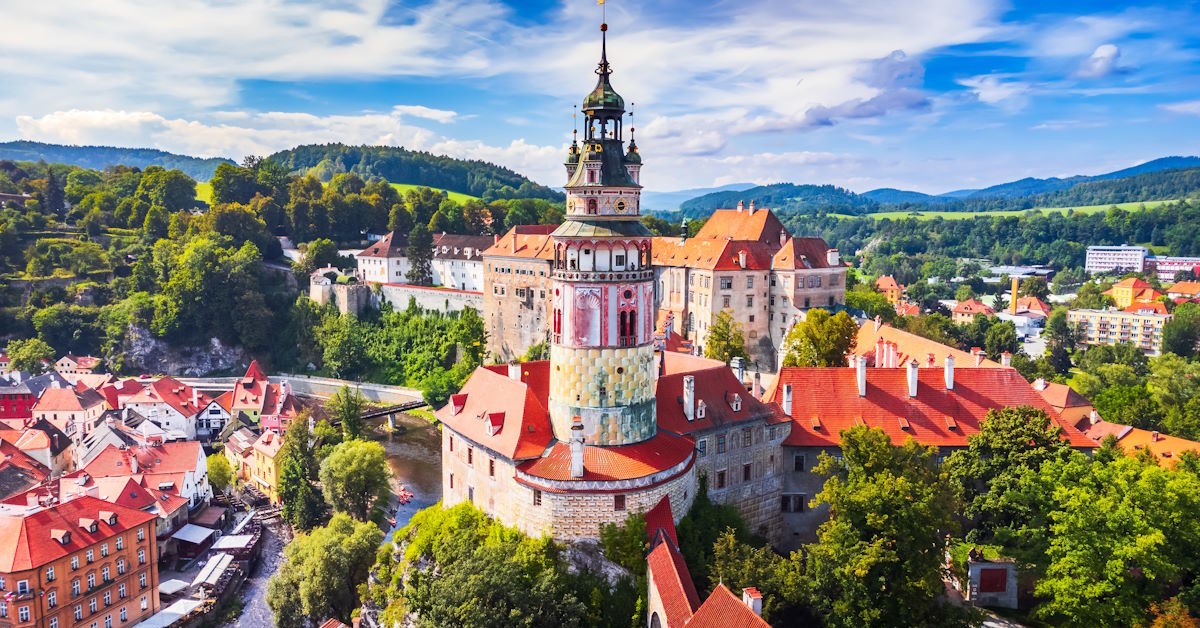
The city of Olomouc in the eastern province of Moravia is home to six Baroque fountains and an 18th-century Trinity Column, a monument decorated with religious sculptures. On Wenceslas Hill in the city, the Gothic-style Wenceslas Cathedral and the Romanesque-style Bishop's Palace invite visitors. The town hall was once a merchant's house and impresses with its vaulted rooms as well as an astronomical clock.
Brno, also known as Brno, is world famous for its modernist buildings. An outstanding example is the restored Villa Tugendhat, completed in 1930 by the architect Mies van der Rohe. Within the medieval fortress of Spielberg you will find the city museum and beautiful gardens, as well as the former prison with its vaulted tunnels. The baroque cathedral of St. Peter and Paul impresses with its magnificent altars and a statue of the Madonna and Child from the 14th century. From its steeple you can enjoy a breathtaking view of the city of Brno.
Ostrava, also known as the "Steel Heart of the Republic", is the third largest city in the Czech Republic and a place full of technology and industry. For example, the national cultural monument Dolní Vítkovice is extremely impressive, where there is the opportunity to take a lift to the very top of a blast furnace - an experience you won't find anywhere else. In addition, only Ostrava offers the opportunity to go down into an old coal mine and experience 250 million years of history up close.
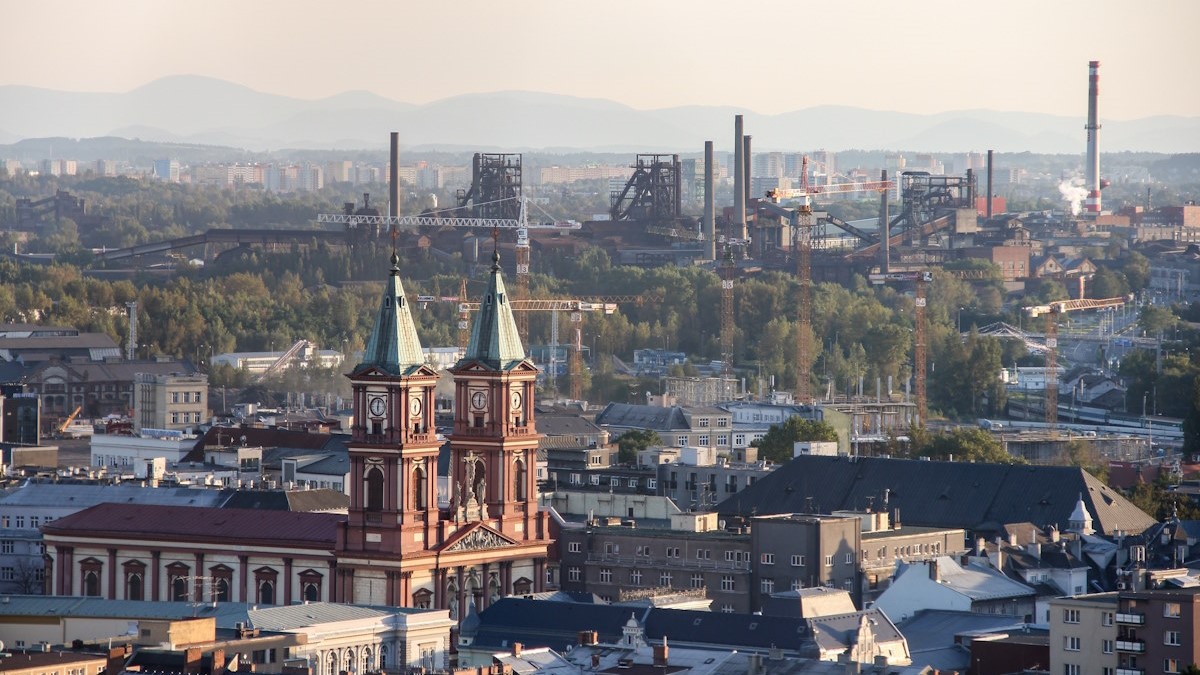
The city of Pilsen in the western part of the Czech Republic is famous for the Pilsner Urquell brewery. This has specialised in the production of bottom-fermented beer since 1842 and has various cellars for storing the beer varieties. In the historic centre of Pilsen with picturesque parks is the large 19th-century synagogue, where various concerts are held throughout the year. The 16th century St Bartholomew's Cathedral houses Renaissance paintings and a high tower with a viewing gallery for visitors.
The capital of the South Bohemian region in the south of the Czech Republic is Budweis (České Budějovice). Around On Přemysl Otakar II Square, which is lined with arcaded houses, you will find the Baroque Samson Fountain and the town hall with its three turrets. The Black Tower offers a view of the old town and Mount Klet' to the southwest. St. Nicholas Church, which has been rebuilt several times, has baroque chapels as well as three naves.
To the east of Prague lies Kutná Hora, known for its Gothic Cathedral of St Barbara, decorated with medieval frescoes and flying buttresses. Another attraction is the Sedletz Ossarium, a chapel decorated with human bones. On the site of a former Cistercian monastery stands the Gothic and Baroque Cathedral of the Assumption of the Virgin Mary. In the Czech Silver Museum you can relive the history of silver mining in the town with a replica of a medieval mine.
3. Castles (almost) like something out of a storybook
In the whole of the Czech Republic, more than 2,000 well-preserved castles can be visited, which give the impression that they were the inspiration for the various fairy tales by the Brothers Grimm. We would like to present a few of them below:
Karlstejn Castle
The fascinating Karlštejn Castle is located in the small village of Karlštejn, about 30 km southwest of Prague in the Czech Republic. This once Bohemian fortress was built personally by Emperor Charles IV and, after its completion, was the guardian of the of the precious imperial jewels of the Holy Roman Empire until 1421.
Hluboká Castle
Our tip for travellers with a romantic streak is the fairytale castle of Hluboká nad Vltavou. When the sun shines on the immaculate white castle with its eleven turrets, you automatically feel enchanted. However, this impression is deceptive The castle's history is deceptive, however, because it was originally a fortified castle and only later acquired its characteristic appearance.
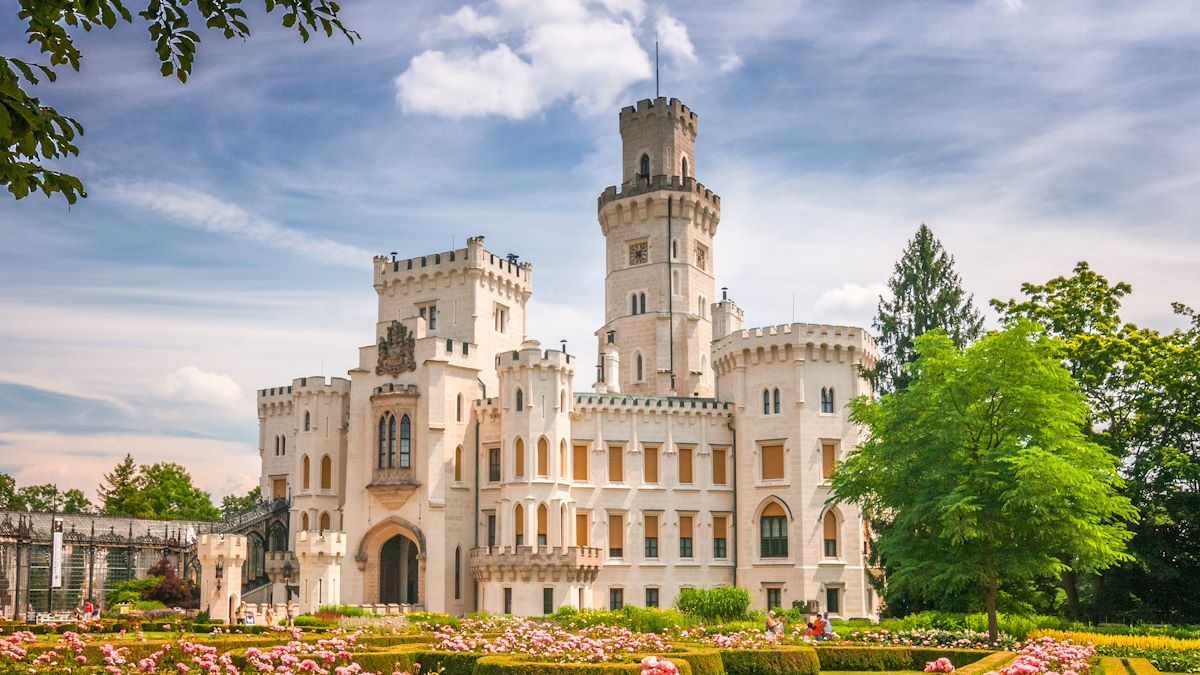
Castle Kroměříž
The Baroque Archbishop's Chateau in Kroměříž is the dominant feature of the town of Kroměříž and is now state-owned. The Holy Trinity Column near the chateau is a UNESCO World Heritage Site. The chateau also includes a beautiful pleasure garden, where you can relax after a tour of the chateau.
Castle Lednice
Lednice Castle in the Czech Republic was built in numerous construction phases from the 13th century onwards by members of the Princely House of Liechtenstein and rebuilt to meet changing demands, has been presented in neo-Gothic style since the 19th century, and is - together with its park - today part of the UNESCO World Heritage Cultural Landscape Lednice-Valtice.
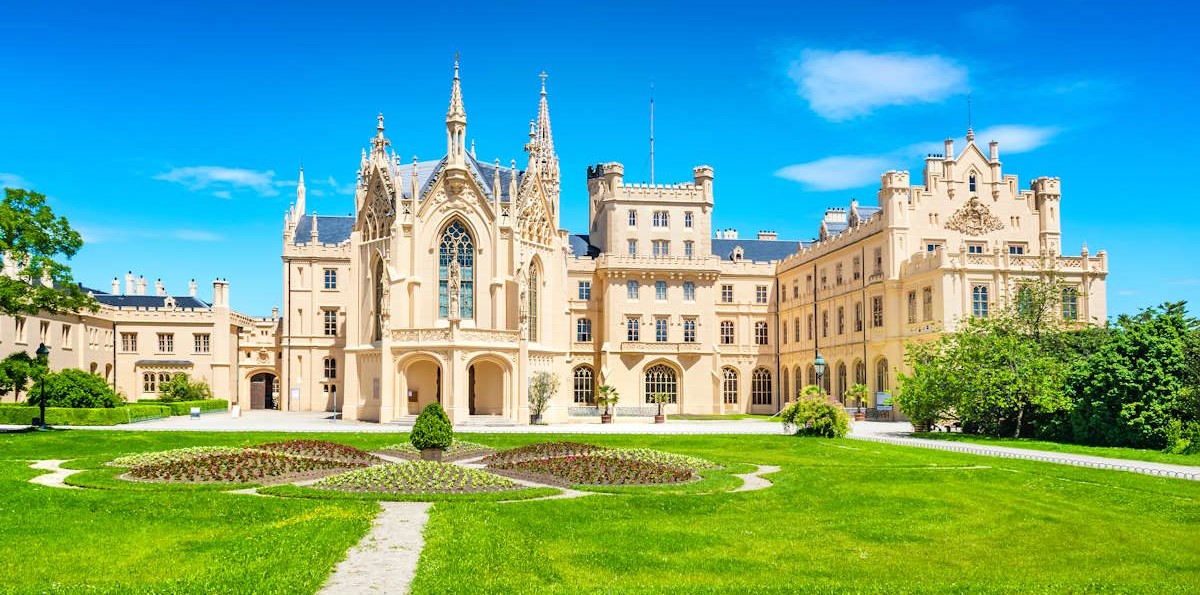
Castle Konopiště
The romantic Konopiště Castle, about 37 km south of Prague, is known as the seat of Archduke Franz Ferdinand of Austria-Este, who lived here with his family and whose violent death in Sarajevo in 1914 triggered the First World War. triggered the First World War. The unique collections of weapons and hunting trophies as well as the extensive palace grounds with a rose garden are the main attractions of the palace.
4. Wellness holidays in the Czech spa resorts
In addition to the cultural highlights with historic towns and castles, the Czech Republic is also ideal for those seeking relaxation, as the country is known for its many spa resorts. Some of these are just around the corner from the German border, such as the famous spa triangle of Karlsbad, Marienbad and Franzensbad. There is also the oldest spa in Teplice and Joachimstal with the first radon spa in the world.
Karlovy Vary (Karlsbad) is the well-known spa town in the Bohemia region in the west of the Czech Republic. Thanks to its numerous thermal springs, Karlovy Vary has been a popular destination for young and old since the 19th century. The spa centre comprises several colonnades with colonnades. In the modern bubble colonnade is the geyser Pramen Vrídlo, with a fountain up to 12 m high.
The spa town of Marienbad is located in western Bohemia and is surrounded by mountain forest, mineral springs and green parks. The Boheminium Park houses miniature models of Czech monuments, and the main Baroque colonnade is distinguished by its bronze reliefs and ceiling frescoes. and ceiling frescoes. The neoclassical "Singing Fountain" plays classical music every 2 hours.
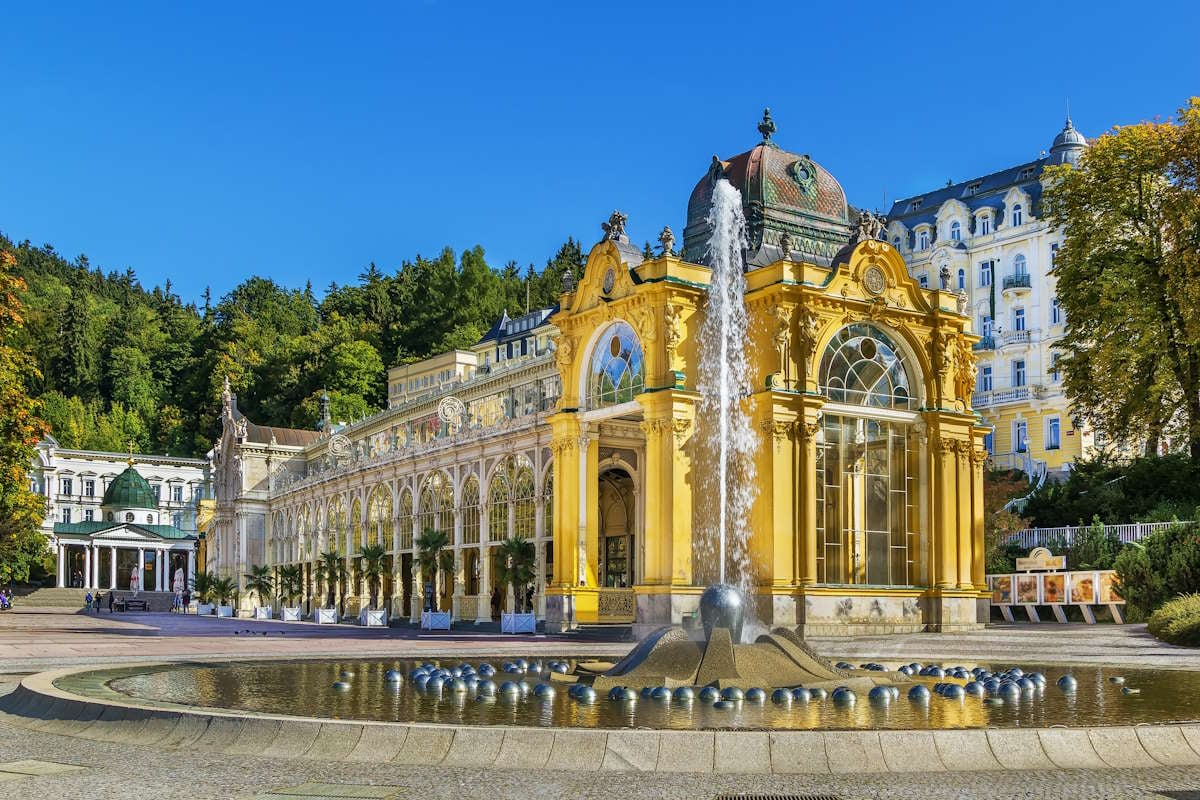
Franzensbad (Františkovy Lázně) is located five kilometres north of Cheb in the Karlovy Vary Region and completes the widely known spa resorts in the Czech Republic, where even Johan Wolfgang von Goethe could enjoy relaxation. The historic The historic town centre has been a protected urban monument since 1992, and since 24 July 2021 the town has been a UNESCO World Heritage Site of the Great Spas of Europe.
5. Extensive nature parks, forests and mountain landscapes
With its protected landscape areas, fairytale forests and surprisingly rugged mountain landscapes, the Czech Republic offers wonderful opportunities to spend a holiday in nature.
Bohemian Switzerland (Czech: České Švýcarsko) is located in the Czech part of the Elbe Sandstone Mountains on both sides of the Elbe River. In the east it merges into the Lusatian Mountains and in the west into the Ore Mountains. The highest elevation is the Děčínský Sněžník at 722.8 m. The area has been under landscape protection since 1972, and the Bohemian Switzerland National Park has been located on the right bank of the Elbe since 2000.
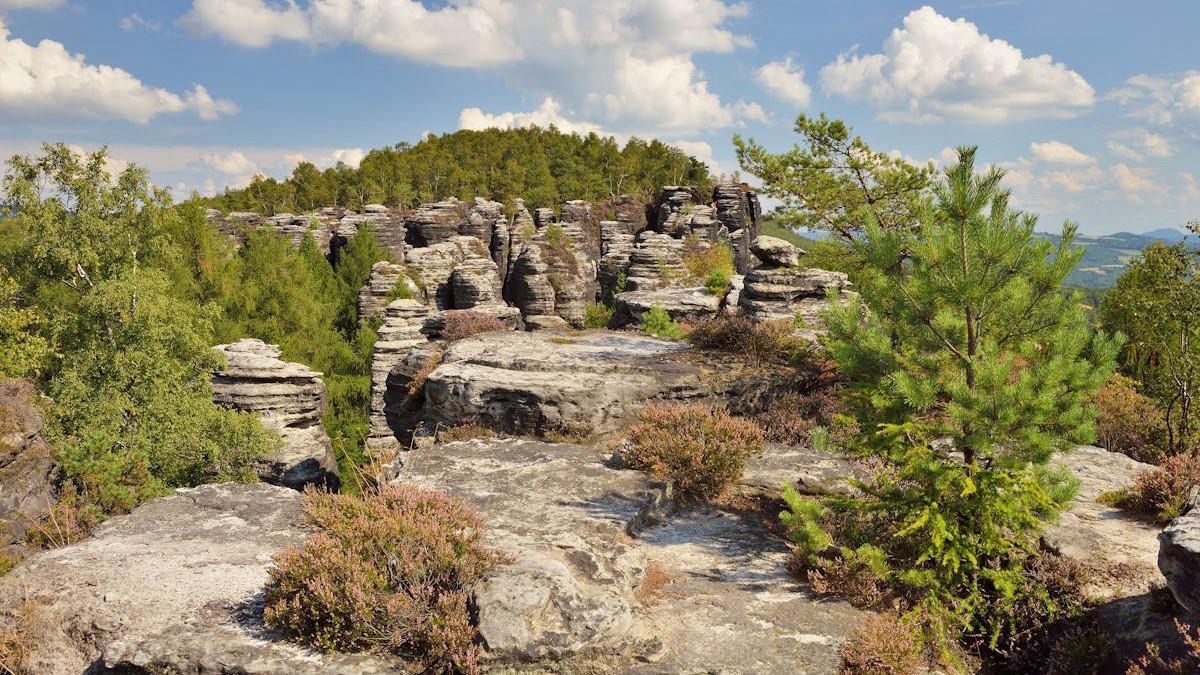
The Giant Mountains(Krkonoše in Czech) is the highest mountain range in the Czech Republic and lies within the 56 square kilometre Krkonoše National Park. The Krkonoše mountains reach an altitude of 1602 metres and has a subalpine character with glacial cirques, alpine lakes and steep rocky slopes. Near the mountain range, at an altitude of just under 1,400 metres, lies the source of the Elbe River..
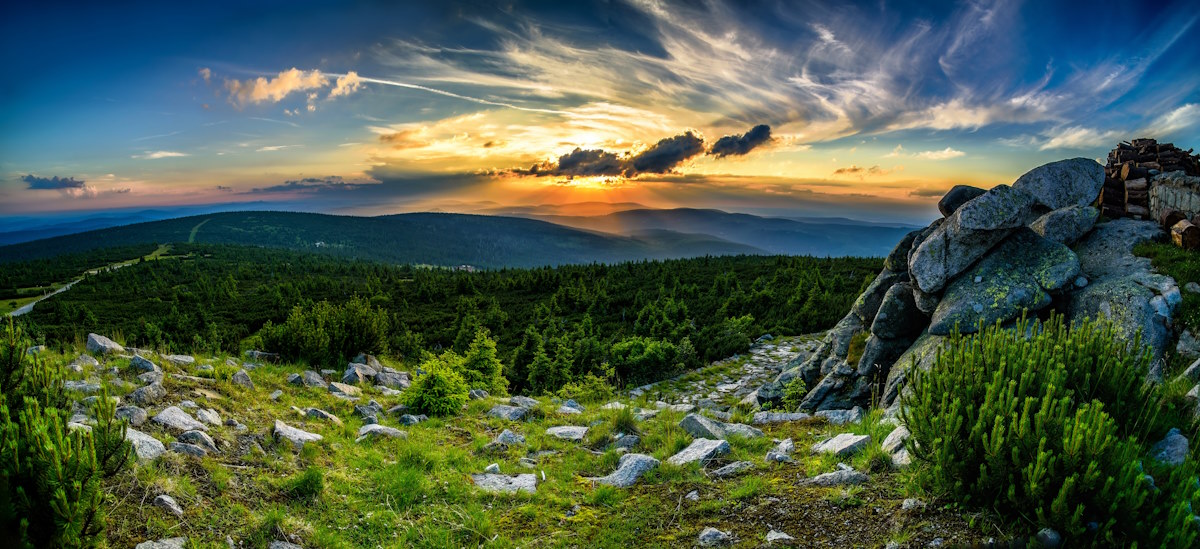
The Bohemian Forestis a mountain range about 120 kilometres long and up to 50 kilometres wide, running along the borders of the Czech Republic, Germany and Austria. After the Krkonoše Mountains (1603 m) and the Altvater Mountains (1491m), it is the third highest mountain range. The highest peak in the Šumava is the Great Arber with an altitude of 1456 m. Although the Šumava is a single mountain range from a geological point of view, it is divided along political borders, so that the term "Bohemian Forest" refers to the following areas. Forest" refers to the following areas:
- Šumava (Old Slavic for forest) on the Czech side,
- Bavarian Forest in the East of Bavaria,
- Bohemian Forest in the north-western Mühlviertel region of Upper Austria.
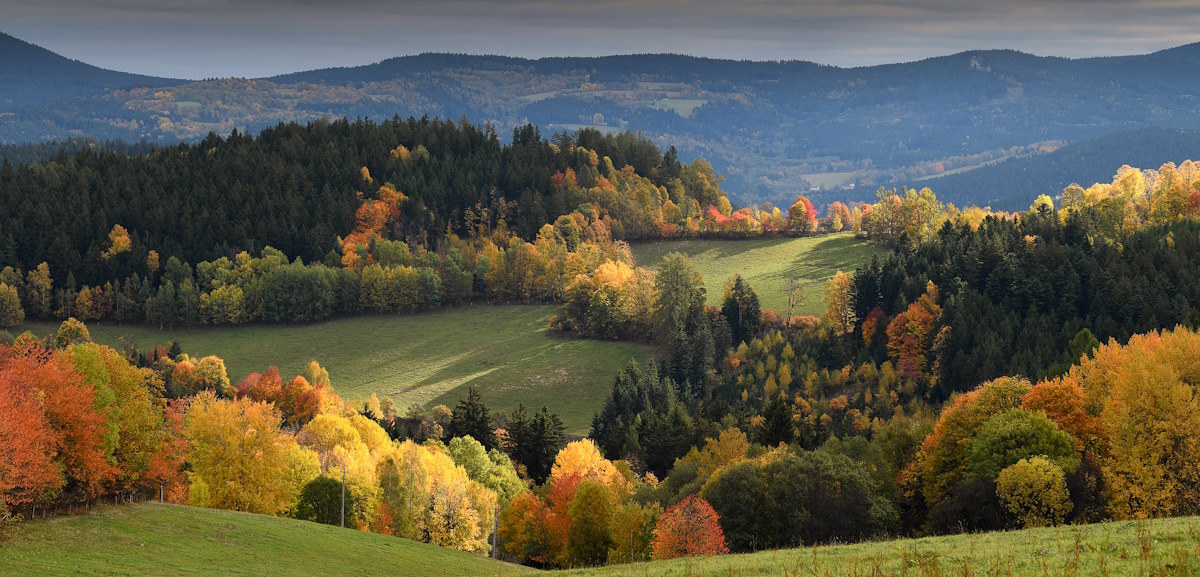
The protected landscape area Třeboňsko belongs to the UNESCO World Network of Biosphere Reserves and stretches in a flat landscape between Indřich Hradec, Tabor and České Budejovice. Hundreds of ponds, rivers and canals can be found here, which were gradually created from the 15th century onwards. Remarkable are the remains of riparian forests, preserved bogs and large coniferous and mixed forests, all connected by a network of well-marked hiking and cycling trails. A permanent exhibition in the Třeboň region's House of Nature offers insights into the history and technical peculiarities of pond fishing.
6. Czech specialities - beer, wine and food
Almost everyone has heard the word combination "Czech Republic and beer", which simply go together. The city names Pilsen and Budweis in the Czech Republic are certainly familiar, after all, two very well-known types of beer were named in the same way.
If you travel to the Czech Republic, you should try a typical "Pivo" and visit one of the many local microbreweries (500 in total!). The possibilities around the topic of "beer" are almost limitless in the Czech Republic: From a beer tour to an overnight stay in a beer hotel to wellness in a beer spa, everything is possible.
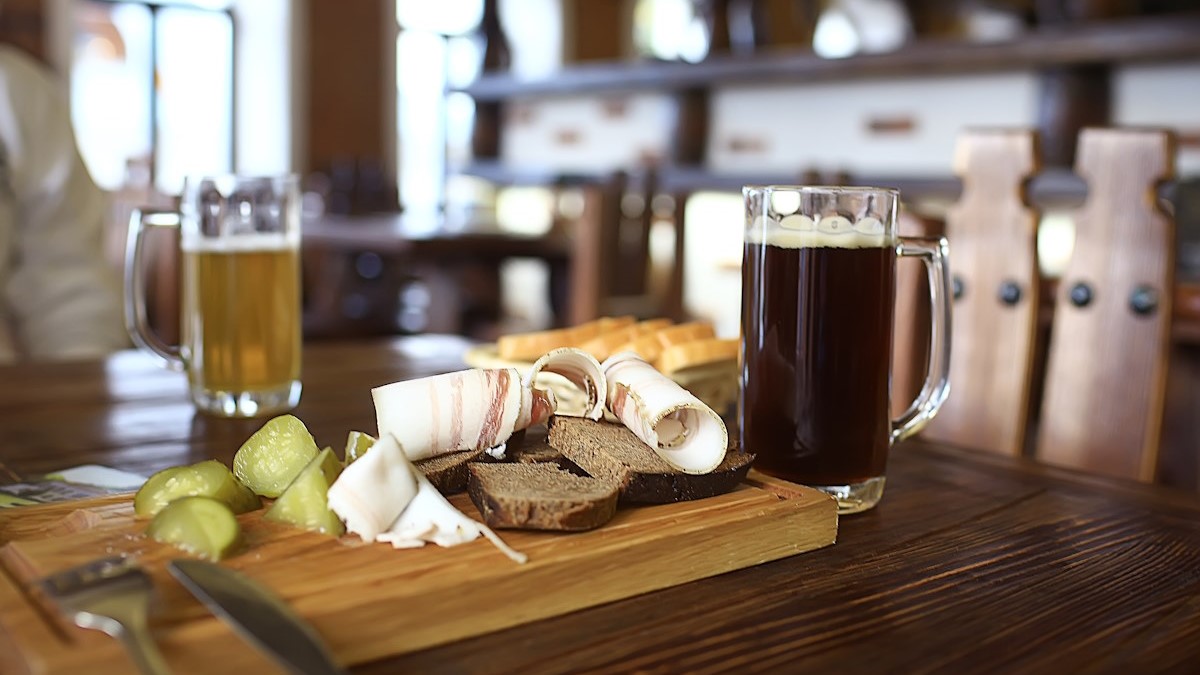
Did you know that in addition to the well-known, but also many unknown, types of beer, there are also excellent wines in the Czech Republic? Wine in the Czech Republic is mainly grown in southern and eastern Moravia, but vineyards are now also being planted in Prague due to the milder climate! The vineyard of St. Wenceslas, for example, is ready for a visit.
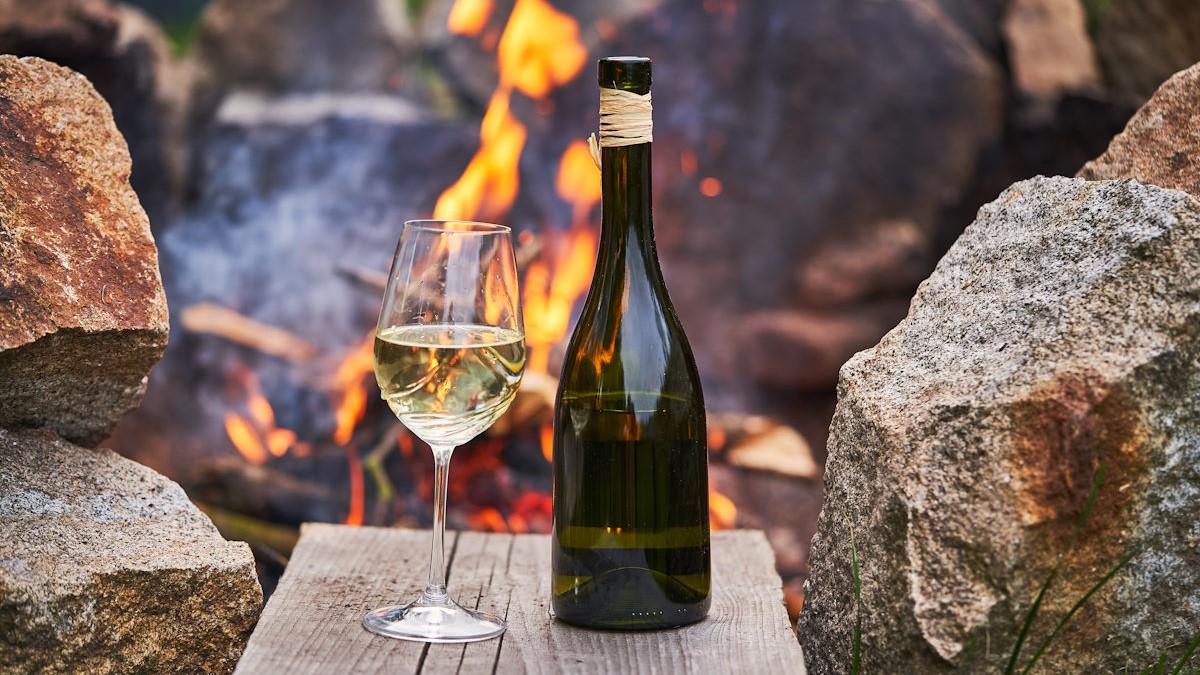
Besides beer and wine, each Czech region has its own speciality. The Czech national dish is "vepřová pečeně", a roast pork with Bohemian dumplings and sauerkraut. In Bohemia there is "Svíčková na smetaně" on every menu, a tenderloin roast on cream with beef, served with a hearty cream sauce and dumplings.
7. Celebrate at the versatile festivals
The Czechs are known for their love of partying - and when they do, they party hard! One of the many festivals in the country is a great chance to immerse yourself in the life of the locals. Some of the most popular festivals in the Czech Republic are:
- July - Colours of Ostrava Music Festival: On more than 20 stages, modern and classical artists of different musical genres perform at this festival, playing jazz, indie rock, world music and electro.
- August - Lipno Sports Festival: A unique sports and cultural programme takes place on the shore of a reservoir, bringing together professional and amateur competitors, but also allowing visitors to take part who want to try a who want to try a new sport such as windsurfing or inline skating.
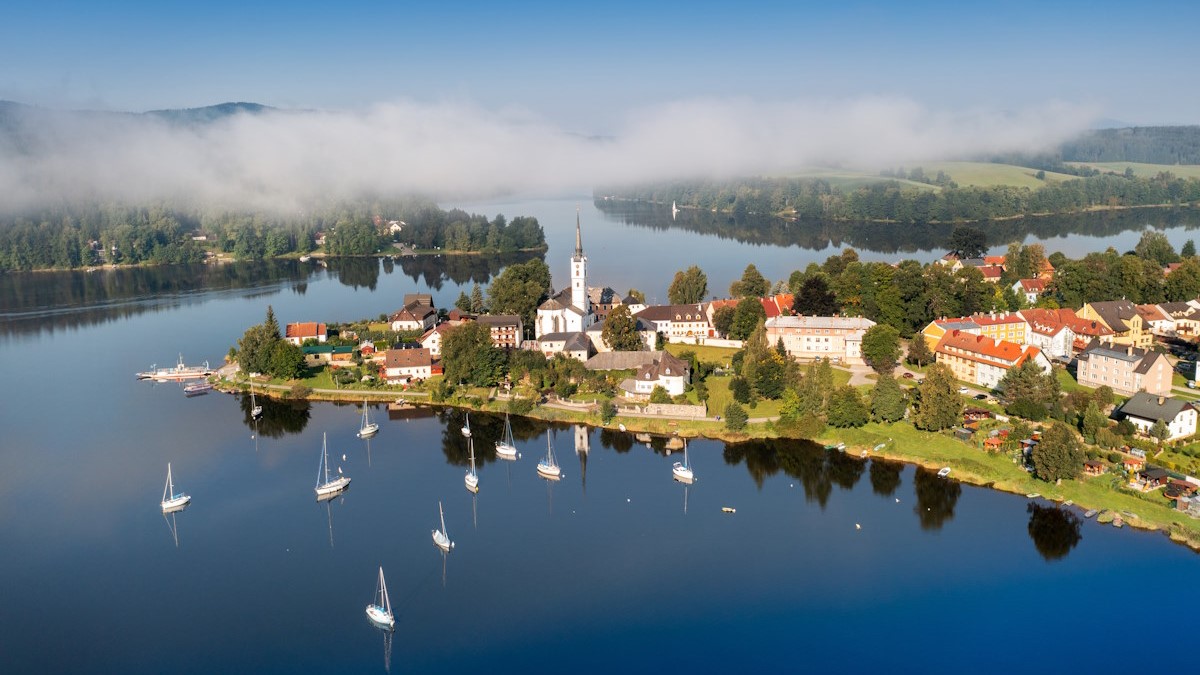
- From the end of August - beer festivals: In addition to wine festivals, many beer festivals also take place in autumn. The Dočesná in Žatec, a hop and beer festival at the beginning of September, deserves special mention.
- September - Grape harvest festivals: Fittingly, at the time of the grape harvest, the various grape harvest festivals take place in the Czech Republic, including directly in Prague Castle or in Znojmo in Moravia.
- September - Dvořák's Prague Festival: This classical and international music festival with renowned soloists, conductors, orchestras and chamber ensembles is held annually in honour of the Czech composer Antonín Dvořák. If you like classical music, you should secure a ticket early on!
Perhaps we have now aroused your interest in a trip to the Czech Republic and you would like to set off straight away?
Just wait a little while longer and please note that you need a vignette for cars or motorhomes (up to 3.5 tonnes) on the motorways or motorways in the Czech Republic. Motorcyclists are exempt from the toll and do not need a vignette.
You can buy the Czech Republic vignette on your journey at Czech sales points such as petrol stations or simply and easily in advance as a digital e-vignette online at mautwelt.de.
For all vehicles over 3.5 tonnes total weight (large motorhomes, trucks or buses), the tolls are not calculated via a vignette but with the help of the MYTO CZ box (calculation based on weight, number of axles, emission class and distance driven). and then invoiced.
Our tip: Order your vignette for the Czech Republic as a digital e-vignette, no more risk of incorrect installation or annoying scratching off after expiry, simply, quickly and securely online at mautwelt.de and you can start your journey to the Czech Republic tomorrow!
